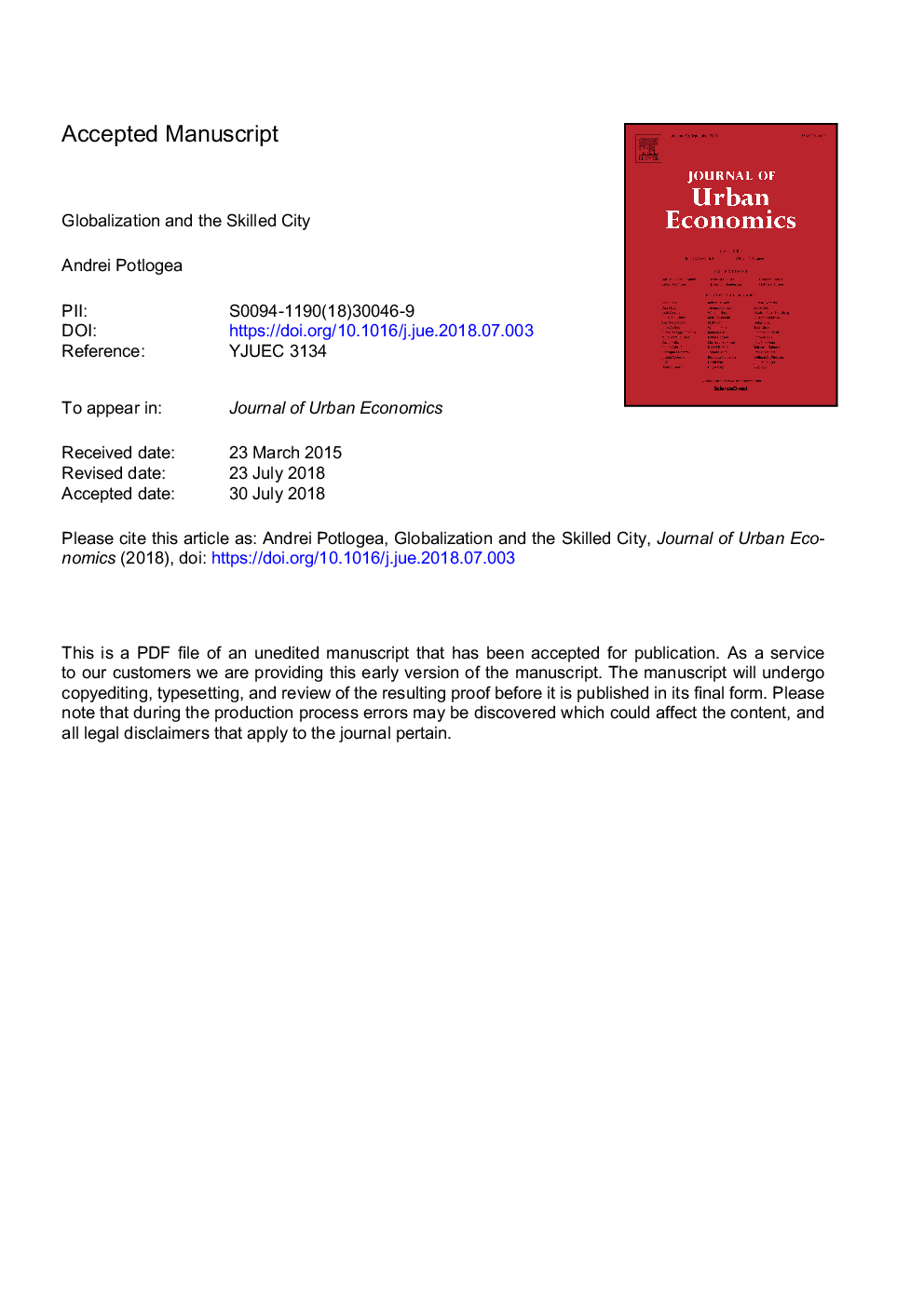| Article ID | Journal | Published Year | Pages | File Type |
|---|---|---|---|---|
| 10127758 | Journal of Urban Economics | 2018 | 78 Pages |
Abstract
The location of economic activity both across and within countries has undergone dramatic shifts over the last five decades. Three key trends stand out. First, cross-country inequality has declined as many developing countries have grown rapidly. Second, economic geography within countries has instead grown more unequal in both the developed and the developing world. Third, within-country spatial disparities have grown mainly because of the disproportionate success of skilled cities. In this paper, I develop a model that jointly explains these patterns as a consequence of deepening international economic integration. My model explains the faster population and output growth of skilled cities, as well as their tendency to increase their initial skill advantage. Consistent with the evidence, my theory predicts a non-monotonic path of urban growth in developed countries. The model predicts a future shift in worldwide urban hierarchies as some developing-world cities overtake unskilled cities in industrialized countries along global supply chains.
Related Topics
Social Sciences and Humanities
Economics, Econometrics and Finance
Economics and Econometrics
Authors
Andrei V. Potlogea,
